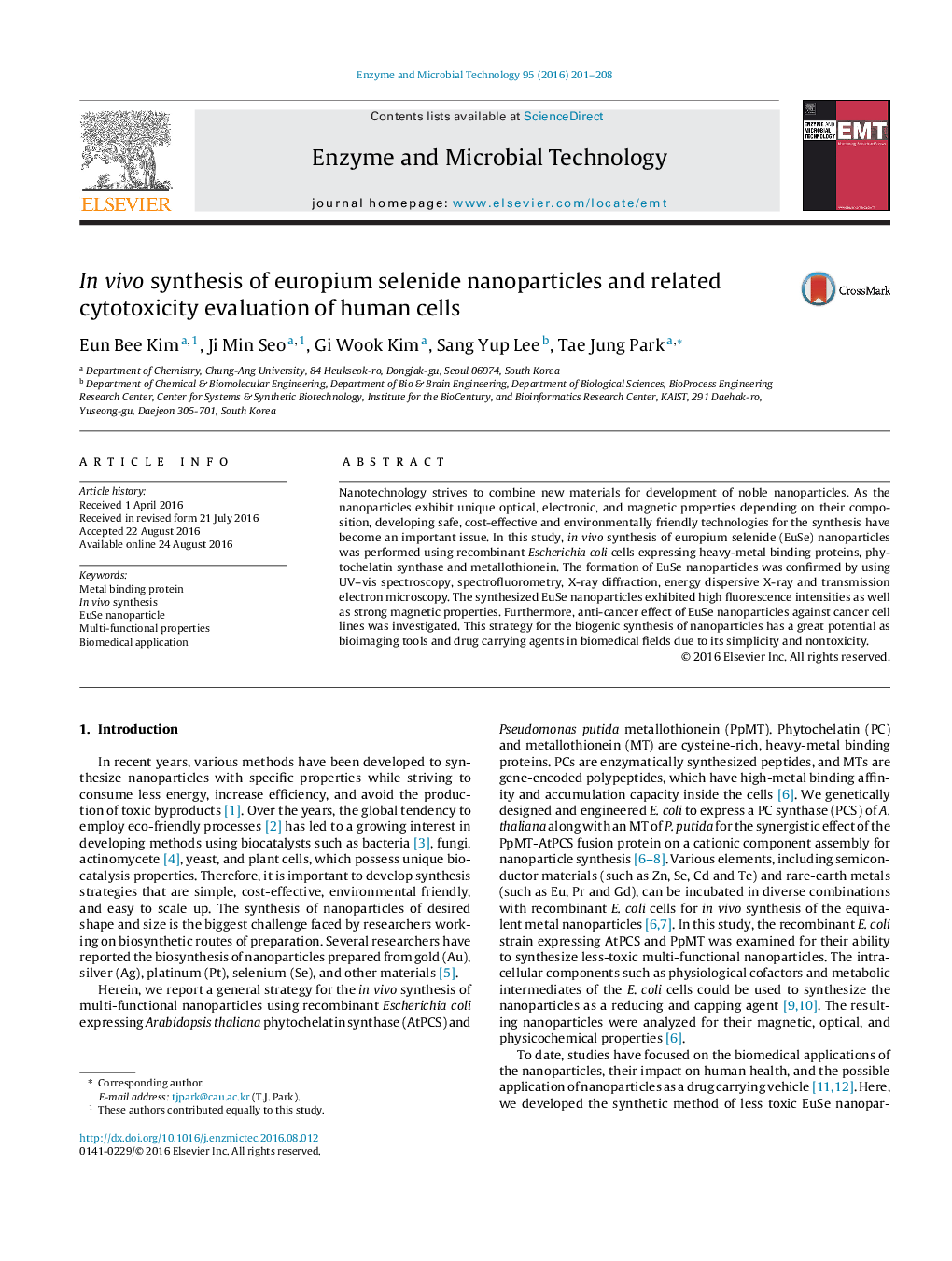| Article ID | Journal | Published Year | Pages | File Type |
|---|---|---|---|---|
| 4752814 | Enzyme and Microbial Technology | 2016 | 8 Pages |
â¢In vivo synthesis of EuSe nanoparticles by using recombinant Escherichia coli.â¢Nano-scale particles with multi-functional properties (fluorescence & magnetics).â¢Biogenic EuSe with more severe cytotoxicity against HeLa and SKOV-3 than 293T.â¢Biosynthesized nanoparticles as good drug carriers and diagnostics.
Nanotechnology strives to combine new materials for development of noble nanoparticles. As the nanoparticles exhibit unique optical, electronic, and magnetic properties depending on their composition, developing safe, cost-effective and environmentally friendly technologies for the synthesis have become an important issue. In this study, in vivo synthesis of europium selenide (EuSe) nanoparticles was performed using recombinant Escherichia coli cells expressing heavy-metal binding proteins, phytochelatin synthase and metallothionein. The formation of EuSe nanoparticles was confirmed by using UV-vis spectroscopy, spectrofluorometry, X-ray diffraction, energy dispersive X-ray and transmission electron microscopy. The synthesized EuSe nanoparticles exhibited high fluorescence intensities as well as strong magnetic properties. Furthermore, anti-cancer effect of EuSe nanoparticles against cancer cell lines was investigated. This strategy for the biogenic synthesis of nanoparticles has a great potential as bioimaging tools and drug carrying agents in biomedical fields due to its simplicity and nontoxicity.
